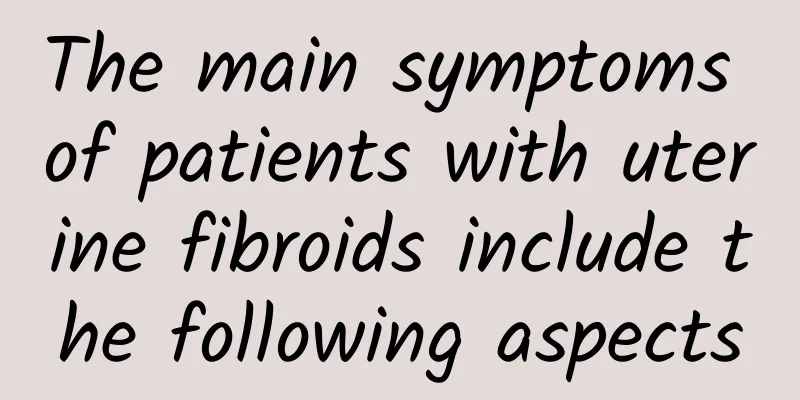What are the ischemic changes of uterine fibroids? What should I do if I have ischemic uterine fibroids?

|
Uterine fibroids are a common benign tumor in gynecology. They grow on the inner wall of the uterus and often cause a lot of discomfort and pain to patients. The ischemic changes of uterine fibroids are a common phenomenon in this pathological process and are considered to be one of the main causes of disease progression. So, what are the ischemic changes of uterine fibroids? What should we do if uterine fibroids are ischemic? Let us learn more about it below. First, let's explain what ischemic changes in uterine fibroids are. Ischemic changes in uterine fibroids refer to the vascular stenosis and ischemic state caused by insufficient blood supply to the uterine tissue where the fibroids are located. This ischemic change is caused by the rapid growth of the fibroids themselves. As the fibroids grow larger, they gradually compress the surrounding blood vessels, making blood supply difficult. Once ischemic state occurs, it may cause a series of symptoms and complications. Next, we list some manifestations of ischemic changes in uterine fibroids in order to better understand this phenomenon. The first is pain. Patients may experience periodic lower abdominal pain, back pain, and pelvic discomfort. This is caused by malnutrition and insufficient oxygen supply to the uterus and surrounding tissues due to ischemia. The second is abnormal menstrual bleeding, which may cause excessive menstruation, prolonged menstruation, and even irregular menstrual cycles. Finally, there is infertility. The ischemic changes of uterine fibroids often damage the endometrium, leading to difficulties in implantation and obstructed embryonic development, thus causing infertility problems. So, what should we do when facing ischemia of uterine fibroids? First of all, we should actively seek help and treatment from doctors. During the medical treatment, drug treatment can be taken, such as using drugs to regulate hormone levels and reduce the growth of endometrium, thereby alleviating ischemia. At the same time, other non-drug treatments can also be tried, such as transcatheter arterial embolization, hysterectomy, etc. During the treatment process, we should also pay attention to maintaining good living habits, including regular diet, moderate exercise and a good attitude. At the end of the article, we once again emphasized the key words "What are the ischemic changes of uterine fibroids?" It is an important phenomenon in the development of uterine fibroids. Understanding the ischemic changes of uterine fibroids is of great significance for diagnosis and treatment. If uterine fibroids are ischemic, you should seek medical attention in time and take appropriate treatment measures according to the doctor's advice in order to recover as soon as possible. At the same time, you should also pay attention to prevention and adjustment of your lifestyle to try to avoid the occurrence of ischemia in uterine fibroids. Only in this way can you better protect your health. |
Recommend
Which hospital is good for endometrial thickness?
Which hospital is good for treating endometrial t...
What are the symptoms after abortion of hydatidiform mole?
If persistent vaginal bleeding or abdominal pain ...
What are the folk remedies for pelvic effusion?
What are some folk remedies for pelvic effusion? ...
Will frequent sex delay menopause?
Menopause refers to the decline of ovarian functi...
Bacterial vaginosis in pregnant women
Bacterial vaginitis is a common type of vaginitis...
My butt got bigger after giving birth and I walk like a hen? Dr. Chen Yizi tried "pelvic slimming hip exercise" and the effect was good
Some women's bodies become deformed after giv...
What are the dietary taboos for dysmenorrhea?
Dysmenorrhea is a common gynecological disease in...
What foods are best for threatened abortion?
Pregnant women will panic when they hear about th...
What is the cause of left ovarian cyst and what is the best medicine
Ovarian cysts are often caused by women's irr...
Can vaginal ultrasound detect pregnancy?
Vaginal ultrasound can check pregnancy and has hi...
What are the symptoms of submucosal uterine fibroids?
Uterine fibroids are a common disease in our live...
Does Bartholinitis cause constipation?
Bartholinitis is a very common disease in life. I...
When is the best time for abortion?
Generally speaking, if it is determined that it i...
How to avoid miscarriage
How to avoid miscarriage? There are many ways to ...
Dietary conditioning methods for patients with irregular menstruation
Irregular menstruation is a common gynecological ...









